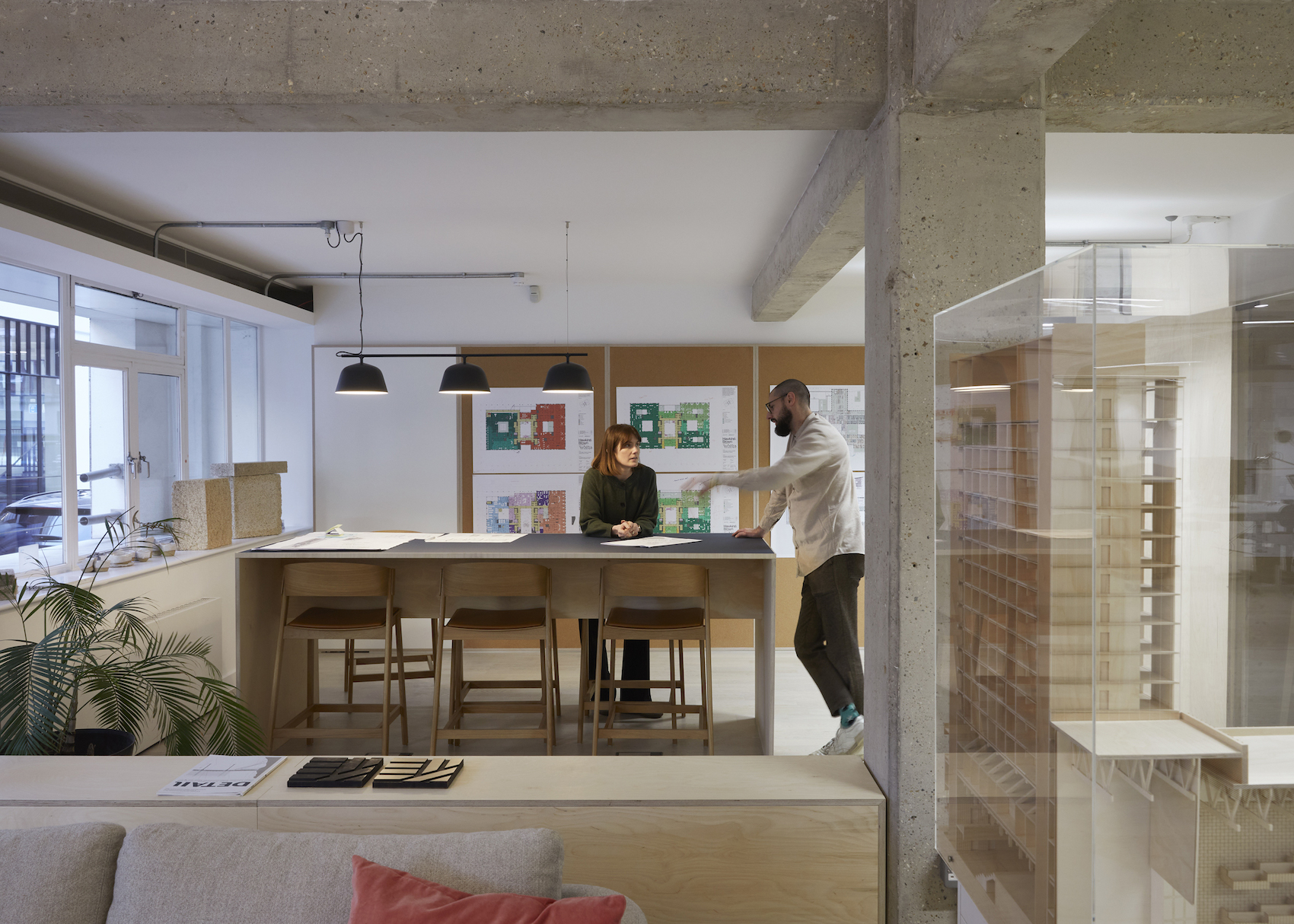Laura Davies talks to Madeleine Jacob about repurposing old furniture and making a studio that’s visually coherent and designed to last.
Laura Davies chats to colleague Giovanni Bonavia Pelà in the practice’s new London home. Photograph by Paul Riddle.
Tell us about White Arkiteker’s office retrofit. What prompted the move?
We outgrew our previous office space. It was very limited: one space and one meeting room. It didn’t reflect changing work patterns. Then we came across a space in Farringdon, a ‘60s building that looked very tired on the inside with overclad columns, carpet tiles and strip lighting. The landlord was struggling to rent it out, so they offered to renovate it to our design.
What were your ambitions for the project? Did being your own client offer any opportunities for experimentation with materials you’d not usually have?
We tried to reuse as much as possible. Our furniture is mainly second-hand in one way or another or from our previous office. We traded items we no longer needed, like under-desk caddies; our office manager has a network of other office managers in architecture practices who trade things between offices. Our director has been making some of the joinery himself.
The acoustic panels were surplus from suppliers we’d already worked with. We’re currently working on a big hospital project and use this space as a reference for some of the hospital administrative spaces. It’s so much easier on this scale to have reused elements, to treat just five reused panels with fireproof lacquer. It’s harder to do that on residential or hospital projects. You can see some marks on the reused materials, but we’ve chosen to keep them. They’re part of the story and don’t negatively impact the space.
What constraints were you working with when making the space suitable to your needs
There’s always a danger when you’re repurposing elements that it’s going to look like a mishmash of things, and we wanted to develop a strong design identity. The space is split over two levels: the main floor has good natural light but on the lower ground floor it was very limited. We made the strip lighting warmer on the ground floor, and installed track lighting and pendants in the lower ground.
How have you extended the office’s lifespan, so that in seven years (the typical length of time before an office in London is renovated) this office won’t need refitting again?
We want to be here for a long time. The biggest thing was how we planned the servicing for the spaces. If we grow, we can accommodate up to 16 additional desks. It’s been about flexibility and adjusting our expectations. We chose robust natural materials to age well: timber can be sanded down and relacquered, for example. We’ve carried out carbon accounting, but it was done post-construction. Going forward we want to take it earlier and use it to inform our design. We have a specialist in sustainability who’s able to do that quickly now.
Pendants and track lighting compensate for the shortage of natural light in the lower ground floor. Photograph by Paul Riddle.
Source: Architecture Today

